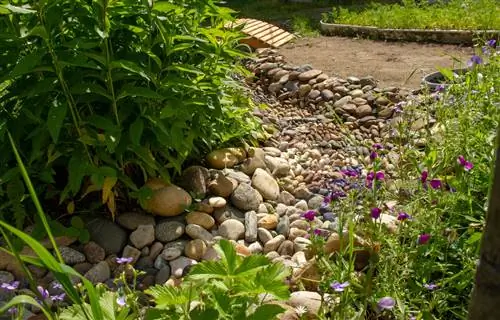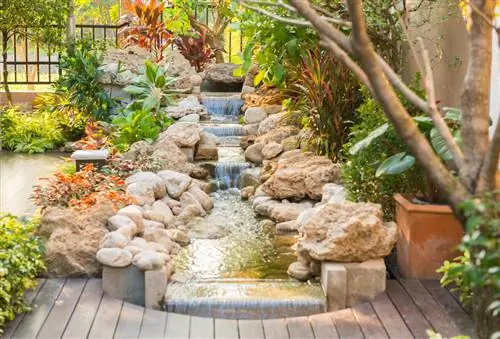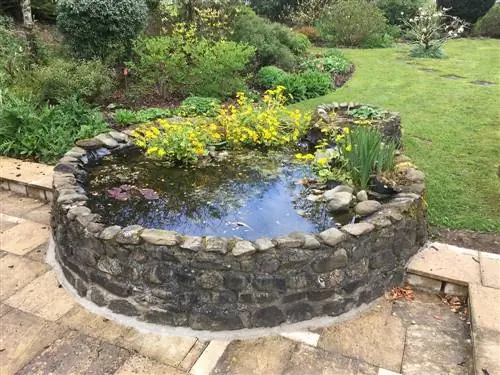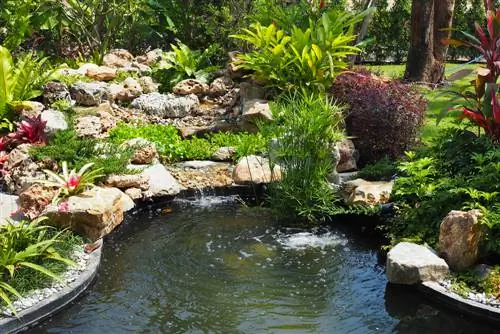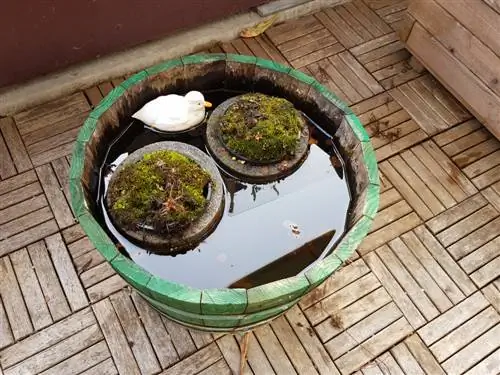- Author admin [email protected].
- Public 2023-12-16 16:46.
- Last modified 2025-01-23 11:19.
A dry stream sounds strange at first. Why is it worth creating an artificial stream if there is no water bubbling in it? Find out here what advantages a dry stream has and how to create it correctly.
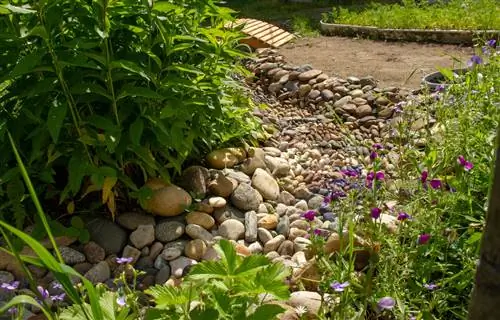
How do I create a dry stream?
Excavate the stream as planned. Laygarden fleeceover the edge to protect against weeds. Placelarge stones at the edge of the stream to shape the course of the stream. You can fill the stream bed with gravel.
How do I design a dry stream?
When choosing a location, you can decide where the dry stream should run, depending onyour preference and taste. Visual reasons are crucial here. For example, you can add depth to a small garden with a narrow dry stream bed that meanders through the landscape. When planting the stream and the bank, you should use suitable plants to ensure a natural look, but you are also free to make your own decision.
How do you use a dry stream as a rainwater drain?
A dry stream can also be a sustainable and at the same time attractive way to allow excess rainwater to drain away in a targeted manner. It is particularly useful in locations where drainage is required.
To increase water absorption, dig the stream deeper and fill it with20 centimeters of grit under the weed fleeceor filling sand. This can absorb water better. This allows the water to slowly seep away over a large area and is directed in the desired direction.
What are the advantages of a dry stream?
In contrast to a water-bearing stream, a dry stream has the following advantages:
- It is more cost-effective.
- You don't need a garden pond or a collecting basin.
- The location can be freely selected. A suitable slope and partial shade are not absolutely necessary.
- The stream bed does not need to be extensively sealed. This means you don't need any pond liner, waterproof concrete, clay or other sealing materials.
- A stream pump is not needed. Accordingly, the electricity costs are eliminated.
- Less maintenance, care and cleaning work is required.
Which plants are suitable for a dry stream?
Basically, you shouldn't put too many plants on the stream bank. Keep in mind that some of the plants spread and grow quickly. Ground cover(e.g. star moss, cushion phlox) create a lively carpet of flowers. Perennials(e.g. astilbes, daylilies, irises) not only bring color but also depth into play. Be sure to plant your stream withgrasses (e.g. pampas grass, bamboo, reeds). These should not be missing on a stream.
Tip
Decorate the dry stream with special stones
Place special stones in your stream as a highlight. You may want to use boulders and natural stones that you have collected on your excursions and that remind you of them. To create a “water effect”, you can use blue-painted stones, glass stones or marbles.

